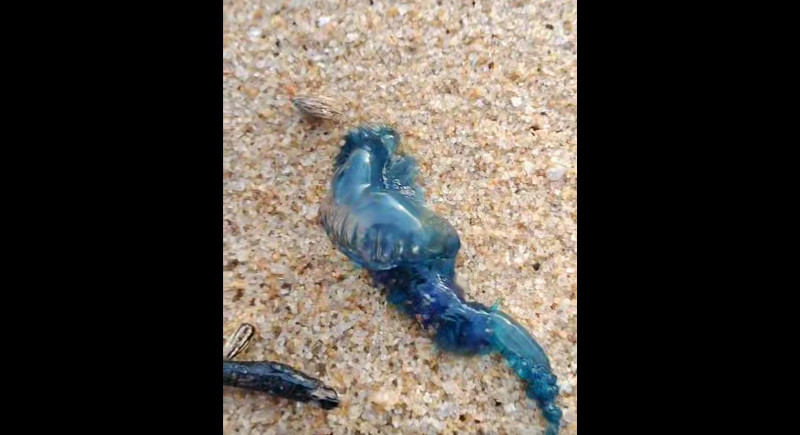The stinging creatures were found at the northern beach yesterday (Oct 27), the Phuket Lifeguard Service confirmed through a post online.
Bluebottles regularly find their way onto Phuket beaches during the southwest monsoon, from May to October each year.
They were last reported as found on Patong Beach in September.
In that instance, a team of marine biologists was dispatched and in total 40 bluebottles were found and collected at the beach.
Officers from the DMCR distributed warning leaflets to the public, local businesses and tourists, urging swimmers to take extra precautions.
A sting from a bluebottle can cause intense pain and whip-like marks on the skin. For first aid, experts recommend washing the sting area with seawater and either submerging it in hot water or applying a dry cold pack for 20 minutes to relieve pain. Vinegar should not be used on bluebottle stings.
Lifeguards remain on alert to provide first aid in case of jellyfish stings and will monitor the waters closely for any further presence of the jellyfish.
Although lifeguards at Patong rescued 27 people from rip currents in September, Patong Surf Life Saving did not report any persons receiving treatment for bluebottle stings.
Two people were treated first aid for shell cuts and and lifeguards did call marine life experts to take three sea turtles into care.
They also called wildlife officers to catch a python at the beach.
In total, lifeguards at Patong coordinated for 12 people to be taken to Patong Hospital, including one person injured by “water toys”. There were two accidents involving “water toys” at Patong Beach last month. Six people were involved, of whom four required first aid.
Others rushed to hospital from Patong Beach included one person under “drug intoxication from a herbal plant” and one person involved in a “quarrel”.








